
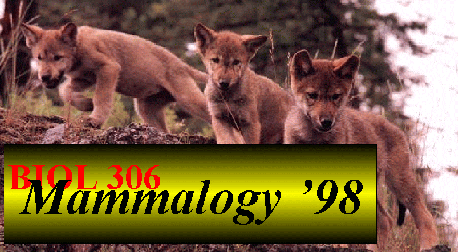
Back to Alex Badyaev's Main Page


Instructor: Alex Badyaev
All content created by AV Badyaev and © 1997-1999
| Laboratory 1 | Laboratory 4 | Laboratory 7 | Laboratory 10 |
| Laboratory 2 | Laboratory 5 | Laboratory 8 | Lab syllabus |
| Laboratory 3 | Laboratory 6 | Laboratory 9 | Exam Questions |
Laboratory 2: ORDER CARNIVORA --- Family Mustelidae

Familia Mustelidae Swainson, 1835 (24 genera)
Small to medium size (11-150 cm). Short limbs, digitigrade, planti-digitigrade, rarely plantigrade, 5 digits with non-retractable claws; sometimes web between digits (aquatic forms) Well developed anal glands. Well developed crests on skulls of large forms.
Teeth: i3/2-3 (2 in sea otter); c1/1; p 2-4/2-4; m1/1-2 = 28-38. Well developed canines. Os penispresent.Worldwide, except most Antarctic isl., Australia, s. Pacific isl., Madagascar. Mostly terrestrial, also semi-arboreal, semi-aquatic and aquatic forms. Most solitary, some in family groups, several species (sea otters) social. Nests in dens. Most are nocturnal.
Laboratory 3: ORDER CARNIVORA -- Family Canidae & Family Felidae
Familia Canidae Gray, 1821, (11 genera)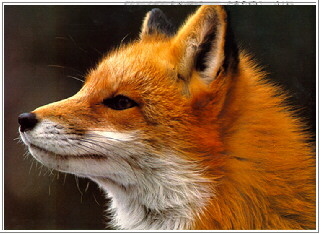

Body length 40-160 cm; tail 11-55 cm; Digitigrade; front legs 5 digits (exc.1 sp); hind legs 4 digits, non-retractable claws. Uniform coloration, sometimes with seasonal change in color.
Teeth: 3/3-4;1/1; 4/4; 1-4/2-5 = 38-50. Worldwide distribution except Antarctica and some oceanic islands. Mostly open landscapes. Terrestrial. Most can run very fast (up to 65 km/h in coyote); some excavate very well. Have remarkably good sense of smell. Most solitary, some in pairs or family groups. Food: vertebrates, carrion, less often invertebrates and plants. Most resident; some undertake long-range seasonal movements. Monogamous. Sexually mature at 1 year. Some species have male parental care.
Familia Felidae Gray, 1821 (4 genera)

Body length 46-317 cm, tail length 15-114 cm, weight 2.5-390 kg. Short neck and round head. Digitigrade, front legs 5 digits, hind legs 4 digits. All species, but cheetah have retractable claws.
Worldwide distribution, except Antarctica, Australia and some islands. Mostly closed, forested landscapes, but also semi-deserts and deserts. Terrestrial, but climb trees well. Very specialized predators. Food: birds, fish, rodents, various mammals. Sight and wait-and-strike hunters. Solitary, some in family groups. Felis silvestris libycadomesticated in Egypt 4-3 thousand years ago.
Laboratory 4: ORDER DIDELPHIMORPHIA
ORDER INSECTIVORA --- Family Soricidae ORDER LAGOMORPHA --
Family Ochotonidae & Family
Leporidae

O. Didelphimorphia ---Family Didelphidae Gray, 1821 (12 genera).
Didelphis virginiana Hind foot with opposable thumb and lacking claw, tail scaly; females with abdominal pouch. Uses tail to climb; 13 nipples located in ring (one in the center). Famous for playing dead; Lives in cavities; Accumulates lots of fat in the fall and can remain inactive for long time.
Omnivorous; 2 litters/year; 12-13 ds pregnancy; 8-18 young/litter. Young attach to the nipple for up to 70 ds and then spend one month on mother's body. Only marsupial found in North America; First recorded in Montana in 1989 - moving into state from Idaho after having been released into the Seattle area approximately 10-15 years ago; prehensile tail, well-developed pouch; nocturnal and omnivorous; most generalized marsupial; unique dental formula: 5/4 1/1 3/3 4/4 = 50.
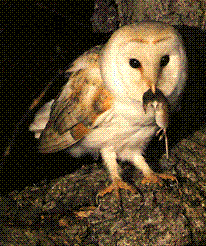 O. Insectivora
- Family Soricidae Gray, 1821 (21 genera)
O. Insectivora
- Family Soricidae Gray, 1821 (21 genera)
Body length from 3.5 (smallest in Mammalia) to 18 cm; tail 1-112 cm, mass 2-3 g. 5 digits. Sometimes web between digits. Teeth 3/2; 0-1/0;1-3/1; 3/3 = 26-32. See lab manual for tooth appearance. Worldwide distribution, except polar regions, Australia & S.America.
Most species prefer moist environments, some semi-aquatic. Solitary. Most activity late in afternoons and at night, otherwise all the time. Do not hibernate. Food- mostly invertebrates. 2-3 litters/year; 4-14 young/litter. Pregnancy 13-28 ds.
O. Lagomorpha - Family Ochotonidae Thomas, 1897 (1 genus)
Ochotona princeps - Pika, rock-rabbit, cony. Found at higher elevations throughout the western United States from British Columbia southward to California, Colorado, and New Mexico.
Smallest lagomorph in Montana. Has distinctive small, rounded ears (unlike other lagomorphs), forefeet are similar in size to hindfeet, and the tail is very small and not readily observable. Weight = 150 grams.
Lives in boulder fields where it is active year-round; It accumulates vegetation which it stores in "hay piles" for use during the winter. Is a solitary species; males and females establish separate home ranges. Breeds twice: once in the spring just as the snow is melting off and again in mid-summer. Most often only raises one litter. Gestation is 30 days and litter sizes average 2-4.
O. Lagomorpha - Family Leporidae Gray, 1821 (10 genera)
Body length 25-74 cm. Females usually larger than males. Large ears; 5 digits front legs with
prominent reduction of first digits; Hind legs longer; 2-3 seasonal changes of fur/ year. Active at
dawn and at night. Active year around, don't hibernate. Can move with up to 70 km/h speed.
Mostly solitary. Hares vs. Rabbits - Hares are born precocious and the young are raised without a
defined nest. Rabbits are born in a more altricial state in a well-constructed, fur-lined
burrow.
Laboratory 5: ORDER CHIROPTERA --- Family
Vespertilionidae
The order Chiroptera is divided into two suborders, Megachiroptera and Microchiroptera. Suborder Megachiroptera, the Old World fruit and nectar feeding bats, contains only one family (Pteropodidae) with 42 genera and 166 species. Suborder Microchiroptera contains 16 families, 135 general, and 759 species. The combined number of species (925) makes this order the second largest order of mammals behind Order Rodentia.
Bats are found on every continent except Antarctica and are absent from
only a few oceanic islands. The diets of bat species vary widely, with
insectivory being most common. Various bat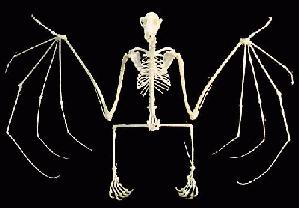 species consume nectar,
pollen, vertebrates, plant foliage, flowers, fruit, and even blood. Roosts
may be found in caves, rock crevices, beneath exfoliating bark, hollow
trees, and also man-made structures. This order contains species of
incredible ecological diversity!
species consume nectar,
pollen, vertebrates, plant foliage, flowers, fruit, and even blood. Roosts
may be found in caves, rock crevices, beneath exfoliating bark, hollow
trees, and also man-made structures. This order contains species of
incredible ecological diversity!
Montana is home to 14 species of bats. All but two Montana species roost in caves or man-made structures. The hoary bat roosts in tree foliage, and the silver-haired bat roosts in bark crevices. These roost preferences may explain the fact that all but these three species give birth to more than one pup per year. Cave roosting species nearly always give birth to one offspring, putting their energy into a single, large pup which may have a high chance of survival due to the relative safety of the cave environment. Foliage and bark roosting bats often give birth to twins, and triplets or quadruplets may occasionally be seen.
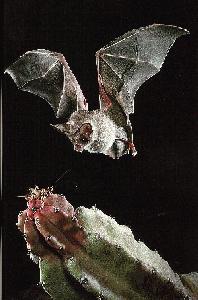 Many bats use a reproductive strategy called
delayed fertilization. Mating
occurs in the late fall, but the female's egg is not fertilized until early
spring. Parturition takes place from early June to mid-July. The gestation
period varies widely in response to environmental conditions. A cold,
rainy spring may result in a later parturition date, while a warm, dry spring
may result in an earlier one. Pups grow rapidly. By approximately 3 weeks
of age, they are able to fly, and by approximately 5-6 weeks, they are weaned.
Many bats use a reproductive strategy called
delayed fertilization. Mating
occurs in the late fall, but the female's egg is not fertilized until early
spring. Parturition takes place from early June to mid-July. The gestation
period varies widely in response to environmental conditions. A cold,
rainy spring may result in a later parturition date, while a warm, dry spring
may result in an earlier one. Pups grow rapidly. By approximately 3 weeks
of age, they are able to fly, and by approximately 5-6 weeks, they are weaned.
Of the species you have studied in lab, Eptesicus fuscus and Myotis
lucifugus, are known to
overwinter in hibernacula in Montana. Lasiurus cinereus, Lasionycterus noctivagans,
Antrozous
pallidus, and Euderma maculatum migrate south during winter.
Corynorhinus townsendii has
been observed hibernating in the state, but no large aggregations have been observed, suggesting
that many members of this species may also migrate outside the state during winter.
Laboratory 6 & Laboratory 7 ORDER ARTIODACTYLA --- Family
Cervidae, Suidae, Dicotylidae, Bovidae
Laboratory 8 ORDER Rodentia --- Family
Sciuridae
Laboratory 9 & 10 ORDER Rodentia ---
Families Aplodontidae, Castoridae, Heteromyidae, Geomyidae, Dipodidae, Muridae, and
Erethizontidae


